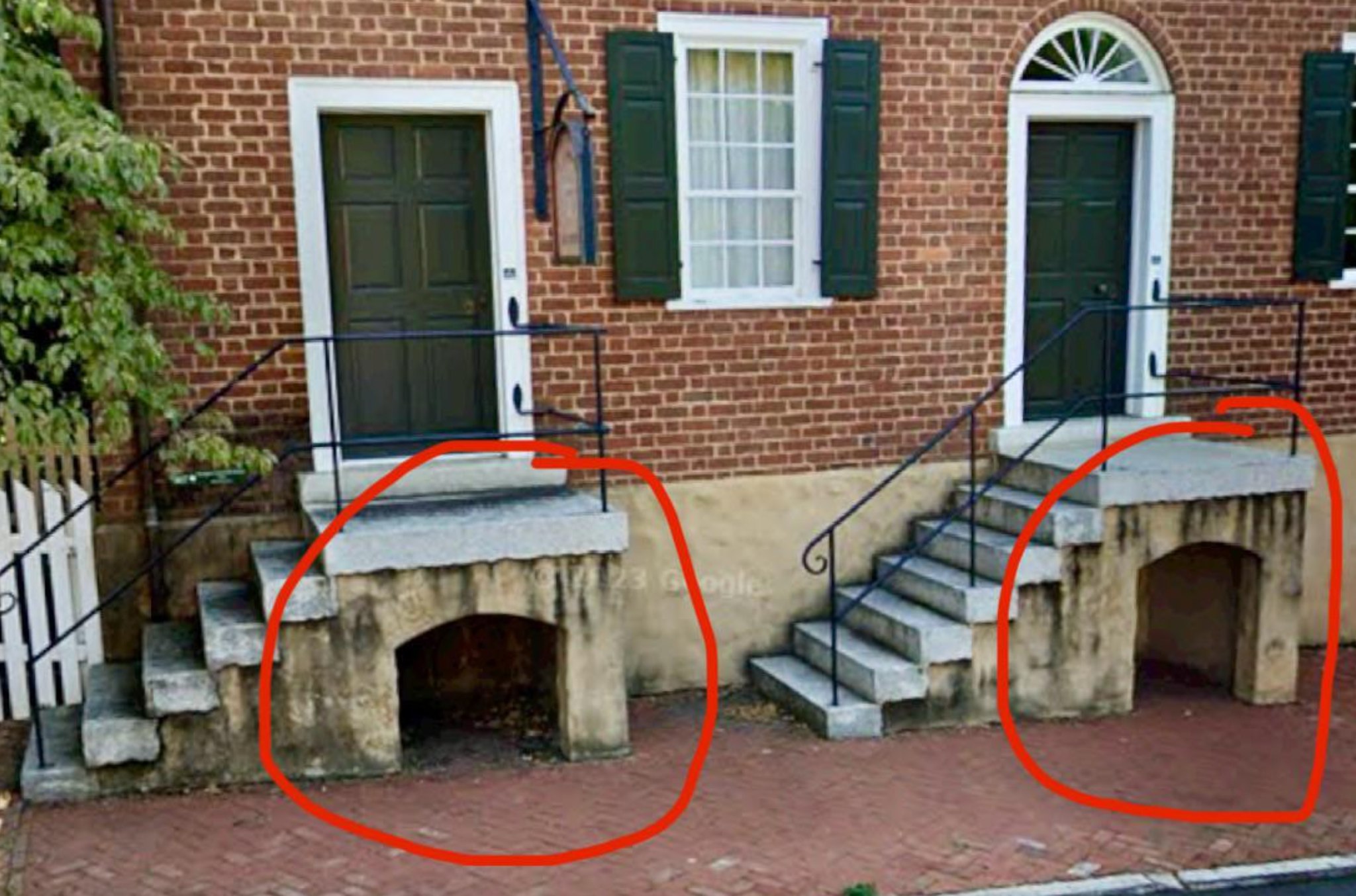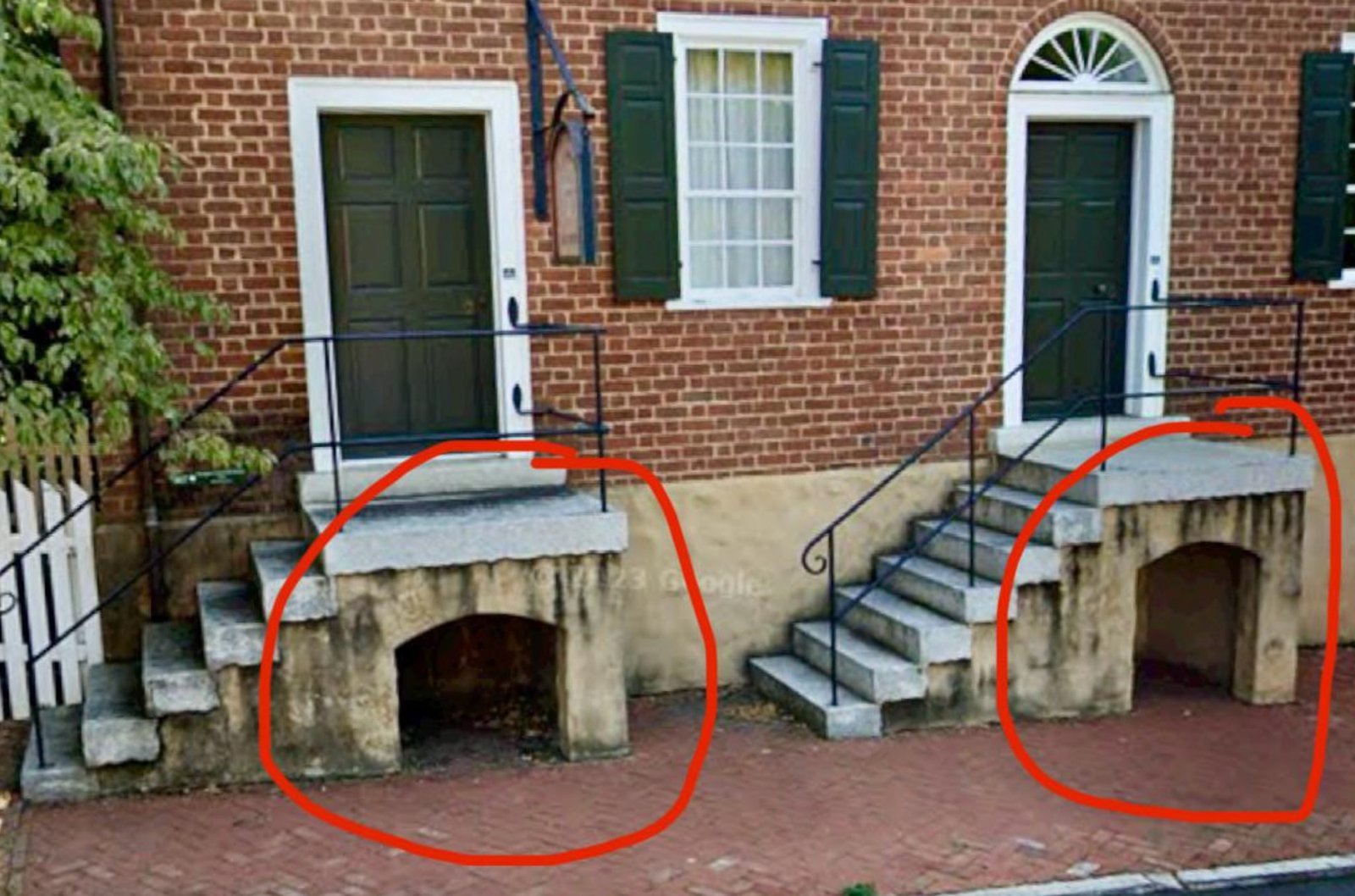If you’ve ever walked through a historic city like Philadelphia or New York and noticed a small, bricked-in arch or chamber under the front steps of a rowhouse, you’ve stumbled across a piece of the past. These are stoop vaults, clever spaces from the 18th and 19th centuries that served a vital purpose in urban homes, revealing how people once tackled the challenges of city life.
Homes in older cities were often raised to avoid flooding due to poor drainage, leaving hollow areas under the front steps. These spaces, built with brick or concrete, became stoop vaults, used primarily to store coal, the main fuel for heating homes and powering stoves during the World War I era. Coal was delivered through a sidewalk hatch into the vault, keeping the dusty fuel separate from living areas while making it easy for families to use.

In crowded cities where space was scarce, with no room for big basements or yards, these vaults were a practical solution. They held not just coal but also firewood, tools, or seasonal items, helping keep homes organized. As modern heating replaced coal, many vaults were sealed or left unused, but they still linger in historic neighborhoods. A Reddit post highlighted two rowhouses with clear vault arches, and a homeowner in Bremerton, Washington, shared how their 1939 home’s vault, sealed in the 1970s, was reopened in the 1990s and now stores firewood with improved drainage.
These vaults are a glimpse into a time when every part of a home had to serve a purpose, and heating was a hands-on task. Some are preserved as historic features, while others are repurposed for modern storage or small gardens, blending old charm with new uses. They show how families creatively managed limited space in bustling cities.
Next time you spot a small arch or sunken space under a stoop, stop and think about its role. It once stored the coal that kept a family warm through winter, and today, it quietly holds a piece of history, reminding us how past generations used ingenuity to make city living work.


